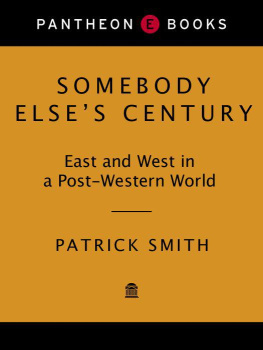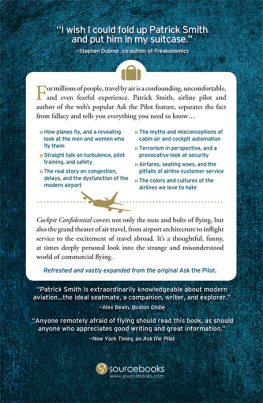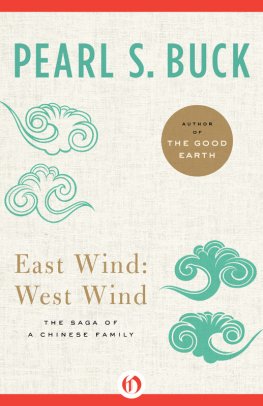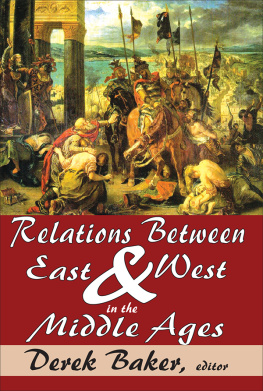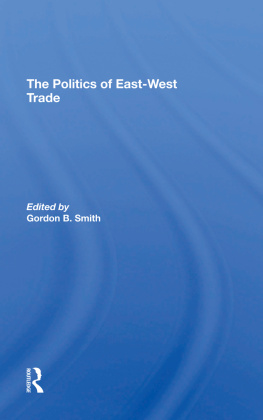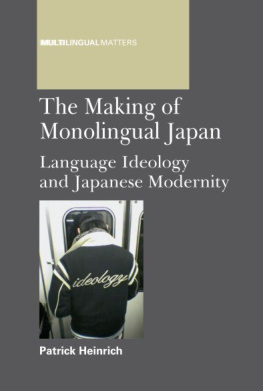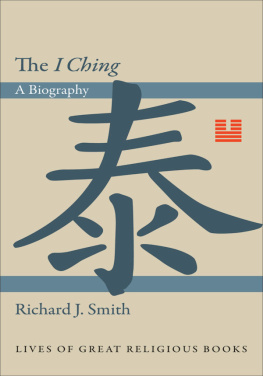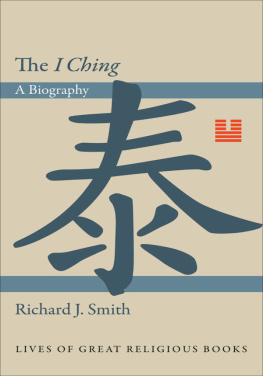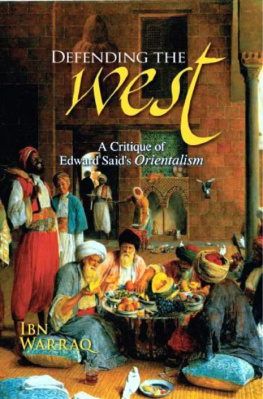ALSO BY PATRICK SMITH
The Nippon Challenge
Japan: A Reinterpretation
Conversations in a Failing State
This book is for R. H. S.,
ever and very there
It is to the memory of Ryszard Kapuciski,
a friend in life, a dear friend by way of all the work
History is marked by alternating movements across an imaginary line that separates East from West
HERODOTUS , The Histories
Contents
A Note on Names
Japanese and Chinese make various choices when naming themselves in international company, and I have sought in this book to respect individual preferences. I have not, then, imposed a standard form. Sometimes the family name is first, sometimes the given name, and the context or the second mention should make clear which.
Another such judgment concerned Indian cities. One hears Bombay and one hears Mumbai, Calcutta and Kolkata. I have settled on the names used during the British era and the first decades after independence, the thought being that they will be more familiar to some readers, and a layer of history might just as well be left intact.
Introduction
But surely, I said, the real Japan must still exist someplace or other if you look around for it.
He shook his head.
Is there no way to save it? I wondered.
No, he said, there is nothing left to save.
DONALD RICHIE , in conversation with
Yukio Mishima (1970)
S OME SUMMERS AGO , during a time I kept an apartment in central Tokyo, two friends from Boston wrote to say they would come for a visit. An attorney and a designer, they were new to Asia, past and present. It was their first journey across the Pacific, Japan their first stop on a tour of the region.
After several days wandering along Tokyos broad avenues and through the narrow, hidden lanes behind them, the time had come, these two said, to see something of Japan. Tokyo, after all, was not Japan: It was a modern city. (And in truth it is not Japan, if we mean as Paris is not France and New York not America.) So we settled on a route, got the car out, and drove southwest into the green of rice paddies and tea terraces and then into the high, forested mountains beyond them.
Lunchtime approached. At the edge of a village, and with a clear, stony stream behind it, I spotted a place I thought would do. It served tonkatsu, deep-fried pork. For some reason, many tonkatsu restaurants tend to serve only tonkatsu, and so it was that day in Yamanashi Prefecture. It is not the most desirable summer dish, tonkatsu, but it has a history. The Japanese came up with it in the late nineteenth century, when they were absorbing Western ways and inventing their version of European cuisine. It is an orphan of a certain time, then. I related some of this as we ordered our biru (which, of course, the Japanese learned from the Germans to brew).
My friends seemed a touch disappointed to hear the tale of tonkatsu.
But is this a real Japanese way of eating? one asked. It was the attorney.
Their eyes began to wander. There was a window in the front, and in it a few of those plastic models the Japanese use to display the dishes on offerin this case tonkatsu this way, that way, or the other way. An extension cord ran out the back to a light near the stream. There were fluorescent tubesthe circular kind, with dangling stringand a refrigerator with a glass door, behind which stood all the brown bottles of biru: Asahi, Sapporo, Kirin. When lunch came, the patron asked politely if we would prefer knives and forks to chopsticks.
Is this a real Japanese restaurant? my lawyer friend persisted.
I HAD FORGOTTEN THIS INCIDENT why recall it?until many years and miles later when I was passing through Calicut. Calicut lies along the southern end of the Malabar Coast, the Indian edge of the Indian Ocean. It stares westward, and it is where da Gama landed in 1498. I had my heart set on seeing the very spot where, I imagined, a pair of heavy leather boots sank into the sand half a millennium earlier and the modern encounter between East and West can be said to have begun.
In town I looked up a professor named John Ochanthuruth. John had taught history and knew the terrain thoroughly. By way of maps, texts, diaries, documents, and years of exploring the coastline, he could tell you precisely when and where da Gama dropped anchor (the evening of May 20 at a place called Kappad, where there is a monument), when and where the Portuguese came ashore (the next day, at a nearby village called Pandarani), and the route the thick-thighed explorer took to meet the zamorin, ruler of the Calicut kingdom.
On the way to the coastline, John wanted me to see some things. He took me to the pepper market that had made Calicut a center of global trade centuries before the Portuguese came. He showed me fourteenth-century mosques built like Hindu temples and mosques with Greek columns and arches. We passed Hindu temples that resembled roadside Christian chapels. We talked about matrilineal Muslims and the ancient Jews and Syrian Christians who had settled in southern India. We talked about the Parsi cemetery, inscriptions around town chiseled in Arabic, and all the Portuguese words embedded in Malayalam, the local language.
A narrative thread emerged. Hindus, Arabs, Persians, Turks, Nestorians, Alexandrians, Abyssinians, Venetians, a few Chinese, a few Javanesethey had all come and made of Calicut and the Malabar Coast the scene of a glorious syncretism. Da Gama, as Indians do not tire of telling you, had discovered nothing: He had sailed into a world that was already churning. It was an Arab pilot he had picked up on the East African coast who had read the winds for him and had guided him along the route he took.
The stout, graceless Portuguese did transform this bazaar of humanity, however. Refused a trading monopoly, da Gama had his guns blazing by 1503. Within a few years many spice merchants had fled for what would now be called the United Arab Emirates. What had been an all-welcome sort of place was soon a matter of blood and gore, divide and conquer, and local enmities previously unthought of. The jihad Calicuts Muslims later declared may count as the first in the modern era. The West had come eastwardin a certain way hauling the Crusades into the modern age.
Da Gamas monument turned out to be a miserable little block of mildewed concrete, an obelisk not much taller than a beach umbrella. It had a tiny plaque embedded in it and was surrounded by a broken fence and a considerable amount of litter. And between the monument and the shoreline, something interesting: The villagers had erected a small mosque. It was bleached pale green by the sun and had a corrugated roof with two truncated minarets; by all appearances it was not much used. The point seemed to lie in the semiology: There would be a Muslim place of worship between the Portuguese sailors plaque and the sea that had carried him here.
Walking the shoreline, John told me a curious tale. Some years earlier, as the five-hundredth anniversary of da Gamas landing approached, scholars planned to mark the occasion. Researchers would gather; papers would be presented. A replica of da Gamas ship was to sail the original route. New Delhi would support the proceedings, along with various Portuguese foundations. Then the shoe dropped in the villages and at the Malabar Christian College, proposed host of what had grown into an assortment of events. No, there would be no commemorating the coming of those colonizing Europeans. There would be no seminars, no ship, and certainly no money from New Delhi. Protesters came from as far as Goa, a days travel northward. And all came to nothing: There was not a single event to mark da Gamas landfall.

